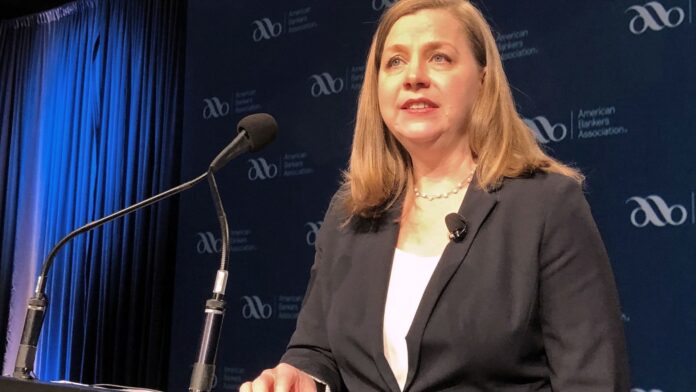Federal Reserve Bank Governor Michelle Bowman gives her first public remarks as a Federal policymaker at an American Bankers Association conference In San Diego, California, February 11 2019.
Ann Saphir | Reuters
Federal Reserve Governor Michelle Bowman said Tuesday she expects more interest rate increases ahead, with higher rates to prevail for a while until inflation is subdued.
“I am committed to taking further actions to bring inflation back down to our goal,” the central bank official said in remarks prepared for a speech in Florida. “In recent months, we’ve seen a decline in some measures of inflation but we have a lot more work to do, so I expect the [Federal Open Market Committee] will continue raising interest rates to tighten monetary policy.”
The FOMC has increased the Fed’s benchmark borrowing rate seven times since March 2022, for a total of 4.25 percentage points.
Last week, minutes from the committee’s December meeting indicated that most members were on board with additional hikes in 2023, likely taking the fed funds rate slightly above 5%.
Reflecting the consensus at that meeting, Bowman said she sees elevated rates holding until there are “compelling signs that inflation has peaked and for more consistent indications that inflation is on a downward path” before easing up on restrictive monetary policy.
“I expect that once we achieve a sufficiently restrictive federal funds rate, it will need to remain at that level for some time in order to restore price stability, which will in turn help to create conditions that support a sustainably strong labor market,” she said.
Policy will be guided by incoming economic data for indications of how Fed policy is impacting growth, she added.
Bowman spoke the same day as Fed Chairman Jerome Powell addressed the Fed’s Swedish counterpart, the Riksbank. In that speech, Powell stressed the need for the Fed to remain independent of political influences as it carves out policy aimed at bringing about stable prices.
Bowman drew upon past experience, noting the mistakes the Fed made in the 1970s, when it raised rates to address inflation but then lowered them when the economy slowed. She said she understands that Fed policy could slow the economy and in particular the labor market, but insisted that doing nothing carried higher costs.
“It’s important to keep in mind that there are costs and risks to tightening policy to lower inflation, but I see the costs and risks of allowing inflation to persist as far greater,” Bowman said.


